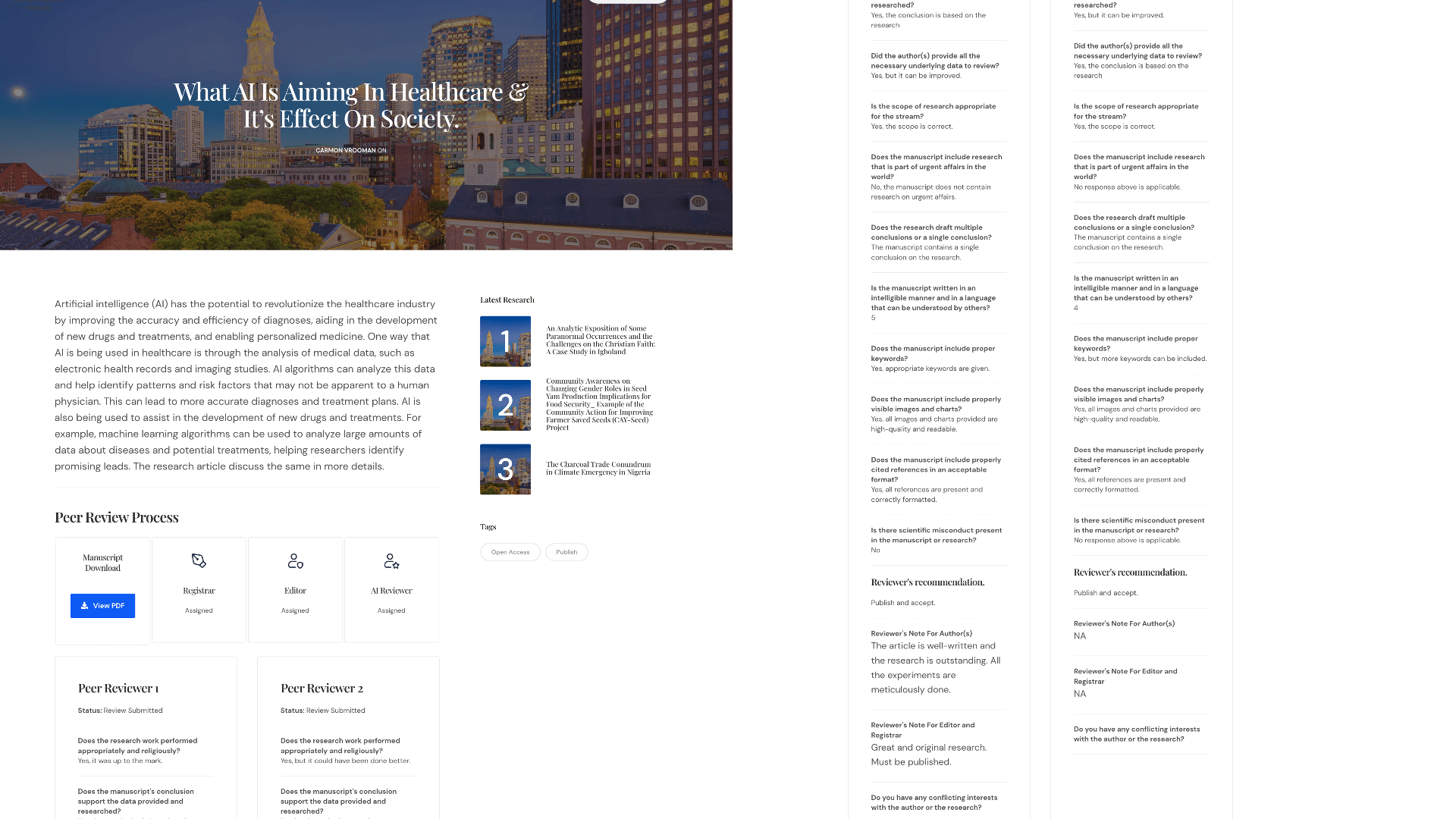The Boston Research Journals (BRJ) Editorial Process stands responsible for deciding which of the articles submitted to the journal should be published. The validation of the work in question and its importance to researchers and readers consistently support such decisions. The editor may be guided by the policies of the journal’s editorial board and curbed by such legal requirements as shall then be in force regarding issues such as slander, copyright infringement, and plagiarism. The editor may confer with other editors or reviewers in making these decisions.

The BRJ editorial process ensures that the peer review process is fair, unbiased, and timely. Research articles are typically reviewed by at least two external and independent reviewers; where necessary, the editor can seek other opinions.
BRJ editorial process covers all the aspects of the research publication process in a multi-staged approach that is both rigorous and comprehensive, along with precise, in-depth question-answers submitted by the two specific assigned peer reviewers. BRJ incorporates artificial intelligence tools that even help pick the most appropriate peer reviewer for a particular manuscript based on the reviewer’s skill set, which helps conduct the editorial process more efficiently.
The editor selects reviewers with suitable expertise in the relevant field, taking account of the need for appropriate, inclusive, and diverse representation. The editor follows best practices to avoid the selection of fraudulent peer reviewers. The editor reviews all revelations of potential conflicts of interest and suggestions for self-citation made by reviewers in order to determine if there is any potential for bias.
The BRJ editor shall evaluate manuscripts for their intellectual content without regard to race, gender, sexual orientation, religious belief, ethnic origin, citizenship, or political philosophy of the authors. When nominating potential editorial board members, the editor shall take into account the need for pertinent, inclusive, and multifarious representation.
The editorial policies of BRJ encourage transparency and complete, evenhanded reporting, and the editor should ensure that peer reviewers and authors have a clear understanding of what is expected of them. BRJ allows the editor to use the journal’s standard electronic submission system for all communications. The BRJ editor shall establish a transparent mechanism for appeal against editorial decisions, along with the publisher.
Editorial Decisions require an investment of time and a specific skill set. Before accepting a request to be a member of the editorial board, an editor must be enlightened about the in-depth research editorial process and the necessary measures required to finalize the publication decision. BRJ Editor has to go through the following steps in order to construct a decision on the publication of the research done on the manuscript submitted by the author:
Step 1: Log in to Your Research Circle Account
Step 2: Access the Manuscript
After you log in, you will have access to all the research manuscripts you have authored, edited, or reviewed before. The manuscript on which you are designated to perform the editorial process next will be available below, along with its ongoing status. As you tap on view manuscript, you are given the option to download the manuscript in pdf format along with the information about the assigned registrar, peer-reviewer I, peer-reviewer II, editor, and AI reviewer of that manuscript next to it. Go through the manuscript and do an in-depth analysis and thorough study of the research, then get started with the peer-review assessment and editorial process.

Step 3: Examine the Peer-Review Process
Proceeding to that, you are disclosed about the peer-reviewer I and II and their current assigned status. If the peer reviewers still need to be assigned, you can initiate the request to assign them. Once the reviewers are assigned, you must wait for them to submit their reviews. Then, if only one of the reviewers has accepted the request and submitted their review, you can go through their assessment and begin to examine the review closely. Regarding the other reviewer, you can either remind them to accept the request and submit their review or request to invite any other reviewer.

Step 4: Reach Your Decision
Once both the reviews by peer-reviewer I and II are submitted, you can perform final appraisals based on their guidance, recommendations, and answers. You can then proceed to your final decision by adding your recommendations, notes & remarks for the author(s), other editors (if any), and the registrar. At the end of the decision form, you are directed to read and check the two essential checkboxes before deciding to submit your final decision to the registrar.

Step 5: Submit Your Final Decision
Save and submit your final decision. Upon that, the confirmation message of your submission will be displayed on your screen, which automatically notifies the other editor, peer-reviewers, author, and registrar about the same.

After Decision Submission:
Once you have submitted your decision, consider making use of BRJ Research Circle to ensure that you receive credit for your work. The platform provides a private profile page, certificates, editor recognition, and discounts for BRJ services.
Remember that, even after finalizing your decision, you must treat the article and any linked files or data as confidential.
Finally, we thank you sincerely on behalf of the journal, reviewers, and author(s) for the time you have taken to give your valuable input to the research.


